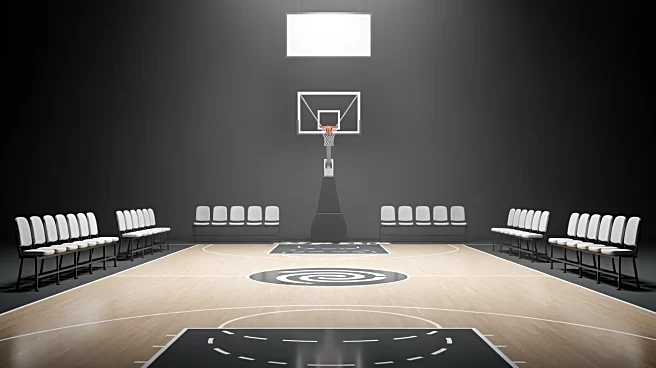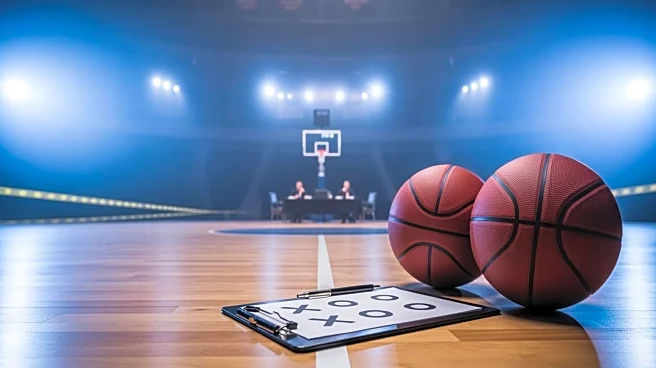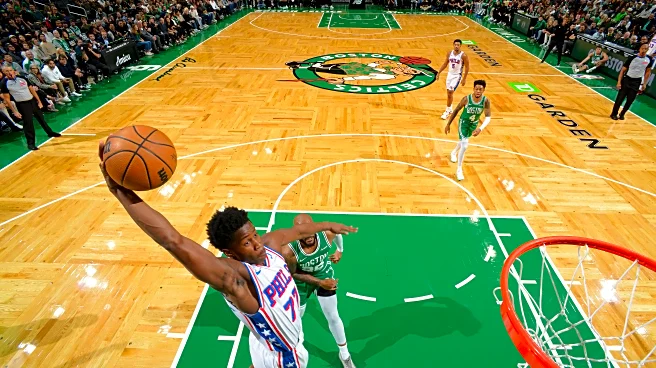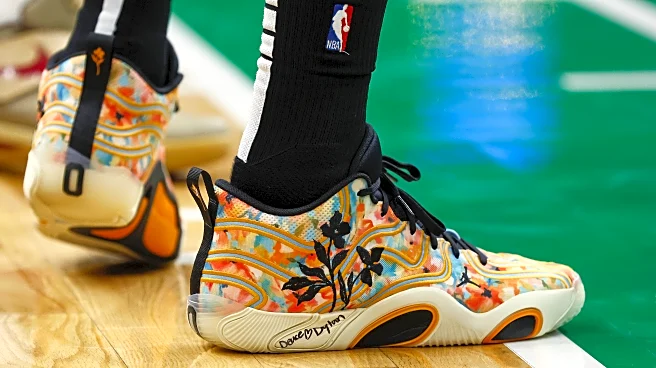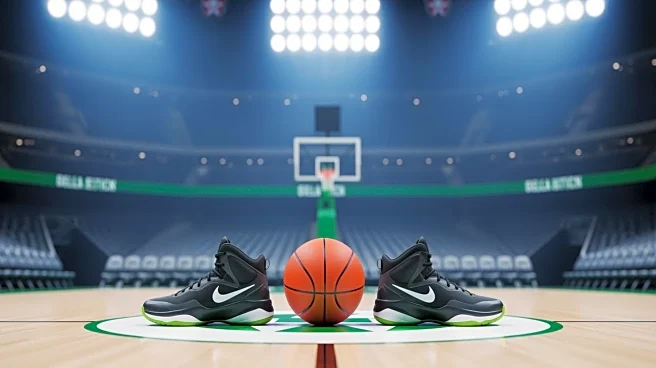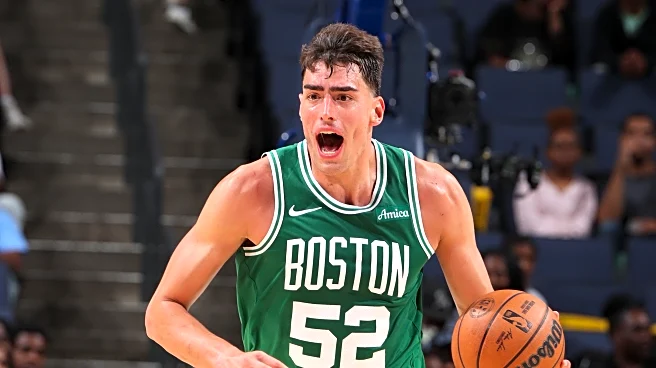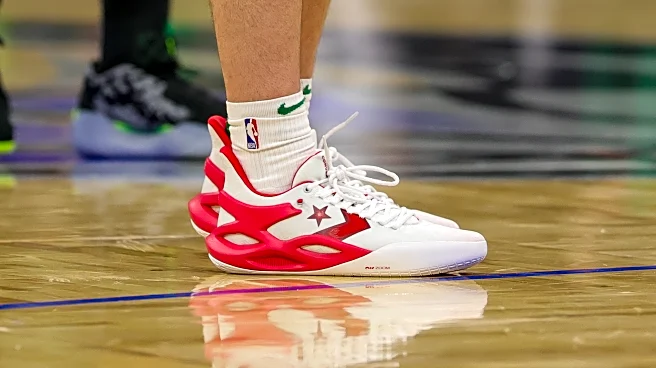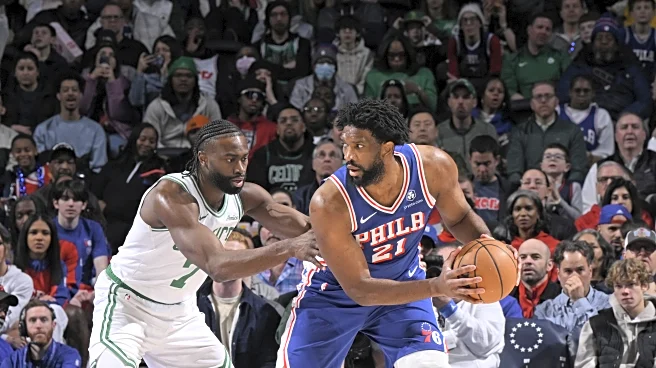What's Happening?
The Boston Celtics are entering the new NBA season without their star player, Jayson Tatum, who is sidelined due to a torn Achilles tendon sustained during the 2025 postseason. As the Celtics prepare to face
the Philadelphia 76ers, Tatum's absence is prompting significant changes in the team's lineup and strategy. The team has made several offseason moves, including trading Kristaps Porzingis and Jrue Holiday, and allowing Al Horford to leave in free agency. These adjustments reflect the team's need to adapt to life without Tatum, with other players expected to take on larger roles. Speculation about Tatum's return has varied, with some predicting he could be back as early as February, while others suggest a more realistic timeline might be a return for the 2026 playoffs.
Why It's Important?
Jayson Tatum's injury is a major setback for the Boston Celtics, impacting their competitive edge in the NBA. As a key player, Tatum's absence forces the team to rethink its strategy and rely on other players to fill the void. This situation could affect the Celtics' performance and standings in the league, influencing their playoff prospects. The team's offseason decisions, such as trading key players, indicate a shift in focus and strategy to maintain competitiveness. Fans and stakeholders are closely watching how the team adapts and whether they can remain a strong contender without Tatum.
What's Next?
The Celtics will continue to monitor Tatum's recovery progress, with hopes of his return potentially aligning with the 2026 playoffs. In the meantime, the team will focus on integrating new players and adjusting their game plan to compensate for Tatum's absence. The coaching staff and management will likely explore further roster changes and strategic adjustments as the season progresses. Fans and analysts will be keenly observing the team's performance and any updates on Tatum's rehabilitation.
Beyond the Headlines
Tatum's injury highlights the vulnerability of relying heavily on star players and the importance of having a robust team structure that can withstand such setbacks. The Celtics' situation underscores the need for strategic depth and flexibility in professional sports, where injuries can dramatically alter a team's trajectory. This development may prompt other teams to reassess their reliance on key players and consider broader strategies for maintaining competitiveness.


